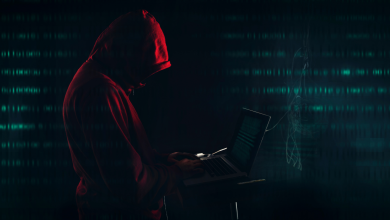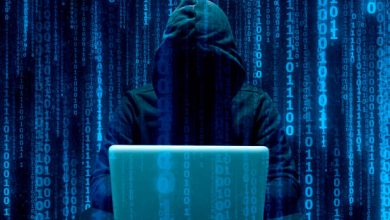Inside the Russian Market Cybercrime Scene: A Detailed Look at the Dark Web

Introduction
The dark web has become a breeding ground for cybercrime, and one of the most prominent players in this underground world is the russianmarket.to. Russian cybercriminals have gained notoriety for their sophisticated hacking techniques, malware development, and cyberattacks on a global scale. In this article, we will take a detailed look at the Russian market cybercrime scene, exploring its structure, activities, and impact on the cybersecurity landscape.
I. The Russian Market Cybercrime Landscape
A. Overview of the Dark Web
The dark web, also known as the “hidden” or “deep” web, is a part of the internet that is not indexed by search engines and requires special software, such as Tor, to access. It provides anonymity to users and is a hub for illegal activities, including cybercrime.
B. Russian Market Dominance
The Russian market has emerged as a prominent player in the global cybercrime scene. Russian hackers and cybercriminals have developed a reputation for their expertise in hacking, data breaches, ransomware attacks, and the sale of stolen data and hacking tools .
C. Organized Cybercrime Groups
The Russian market cybercrime scene is characterized by the presence of highly organized groups. These groups operate with a hierarchical structure, where members have specialized roles and collaborate to carry out cyberattacks and fraudulent activities. Some notorious Russian cybercrime groups include the Carbanak Group, Evil Corp, and REvil .
II. Activities of Russian Cybercriminals
A. Hacking and Data Breaches
Russian cybercriminals are proficient in hacking techniques and frequently target organizations and individuals worldwide. They exploit vulnerabilities in computer systems, networks, and software to gain unauthorized access and steal sensitive data. These stolen data are often sold on the dark web, fueling a thriving cybercrime economy .
B. Ransomware Attacks
Ransomware attacks have become a lucrative business for Russian cybercriminals. They deploy sophisticated ransomware strains, such as NotPetya and WannaCry, to encrypt victims’ data and demand a ransom in exchange for its release. The profits generated from these attacks are used to fund further criminal activities .
C. Sale of Stolen Data and Hacking Tools
The Russian market is a hub for the sale of stolen data, including personal information, credit card details, and login credentials. Cybercriminals use underground forums and marketplaces to trade these illicit goods. Additionally, hacking tools and services, such as exploit kits and DDoS-for-hire services, are readily available for purchase .
III. Impact on the Cybersecurity Landscape
A. Global Reach and Influence
The activities of Russian cybercriminals have a significant impact on the cybersecurity landscape worldwide. Their attacks target individuals, businesses, and governments across the globe, causing financial losses, reputational damage, and disruption of critical services. The Russian market’s influence extends beyond its borders, affecting cybersecurity policies and measures implemented by various countries .
B. Collaboration with State Actors
There is evidence of collaboration between Russian cybercriminals and state-sponsored hacking groups. These collaborations blur the lines between state-sponsored cyber espionage and cybercrime, making it challenging for law enforcement agencies to combat these threats effectively .
C. Challenges for Law Enforcement
The Russian market cybercrime scene poses significant challenges for law enforcement agencies due to the underground nature of these activities and the international jurisdictional complexities involved. The lack of cooperation between countries and the use of encryption and anonymization techniques make it difficult to track and apprehend Russian cybercriminals .
IV. Combating Russian Cybercrime
A. International Cooperation
Addressing the Russian market cybercrime scene requires international cooperation between law enforcement agencies, governments, and cybersecurity organizations. Sharing intelligence, coordinating investigations, and implementing joint operations can help disrupt cybercriminal networks and bring perpetrators to justice .
B. Strengthening Cybersecurity Measures
Organizations and individuals must prioritize cybersecurity measures to protect themselves from Russian cybercriminal activities. This includes implementing robust security protocols, regularly updating software and systems, conducting employee training on cybersecurity best practices, and using strong encryption and authentication methods .
C. Public Awareness and Education
Raising public awareness about the risks and consequences of cybercrime is crucial in combating the Russian market cybercrime scene. Educating individuals about phishing attacks, safe online practices, and the importance of strong passwords can help reduce the success of cybercriminal activities .
Conclusion
The russianmarket cybercrime scene represents a significant threat to global cybersecurity. The expertise and activities of Russian cybercriminals, from hacking and data breaches to the sale of stolen data, have far-reaching consequences. Combating this threat requires international collaboration, strengthened cybersecurity measures, and public awareness. By understanding the inner workings of the Russian market cybercrime scene, we cangain valuable insights into the tactics and strategies employed by these cybercriminals and work towards creating a safer digital environment for individuals, businesses, and governments worldwide . It is essential for all stakeholders to remain vigilant, stay informed about the latest cybersecurity threats, and take proactive measures to protect themselves against the ever-evolving Russian market cybercrime scene.



